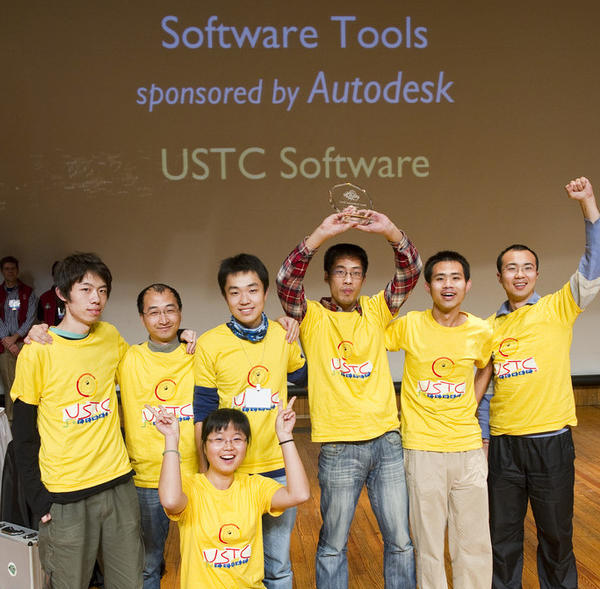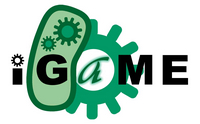Team:USTC Software/home
From 2010.igem.org
(New page: == About iGEM@USTC == The iGEM Team of USTC are the combination of the exact tradition of USTC and the exact vitality of the young. Rigorous daily schoolwork has provided the team members...) |
(→Welcome to the Team USTC_Software wiki for iGEM 2010 !) |
||
| (98 intermediate revisions not shown) | |||
| Line 1: | Line 1: | ||
| - | == | + | {{Team:USTC_Software/Header}} |
| + | __NOTOC__ | ||
| + | {|style="background-color:#E6E6FA" | ||
| + | |- | ||
| + | | | ||
| + | ==Welcome to the Team USTC_Software wiki for iGEM 2010 !== | ||
| - | + | We are a team of both undergraduate and graduate students along with many advisors. This is the second year that USTC has sent a software team to iGEM.<br/> | |
| + | From left to right: Soimort Yao, Kun Jiang, Jue Wang, Zhen Wang, Chen Liao, Shangyu Luo, Zhengda He. | ||
| + | <br/> | ||
| + | Missing on the photo: Zhaoyi Li,Yubo Qi,Luojun Wang. | ||
| + | <br/> | ||
| + | [[image:Best Software Tool.PNG|730px|center]] | ||
| + | <br/> | ||
| + | ---- | ||
| + | {|style="background-color:#D3D3D3" | ||
| + | |- | ||
| + | | valign="top" width="485" style="padding: 20px 20px 20px 20px;" | | ||
| + | ==='''iGaME: Synthetic Biology for Gamers'''=== | ||
| - | + | To promote public awareness of synthetic biology and introduce its basic ideas to the laymen, our team is devoted to the development of an experimental video game which aims at instructing non-biologists to design and improve biological systems. Following the games-with-a-purpose paradigm in which players help solve scientific problems, we apply the human brain's puzzle-solving abilities to the complex designs of biological systems. While most of developed simulation tools are designed for experts to model the reaction networks from scratch, our game integrates a modeling environment in which users only need to submit their assembling of parts for our program to discover and generate the biological model automatically. With a mass of data for the use of modeling, we propose the Standard Biological Parts Automatic Modeling Database Language, which enables descriptions of complicated biological processes. Additionally, previous iGEM project models will be featured to demonstrate the availability of our idea. | |
| - | + | [[Image:USTC_Software_igame.jpg|250px|center]] | |
| + | | valign="top" width="485" style="padding: 20px 20px 20px 20px;" | | ||
| - | + | ==='''Recommendations For Our Site'''=== | |
| + | *'''New Database Language'''<BR> | ||
| + | A new language called '''MoDeL''' (Standard Biological Part Automatic Modeling Database Language) is proposed for automatic modeling of biological system. Due to introducing of novel concepts of species and reaction templates, which are two main components in MoDeL, interactions between species need not to be completely provided and thus making automation possible. | ||
| + | [[Team:USTC_Software/MoDeL|'''[Learn More]''']] | ||
| + | <br> | ||
| - | + | *'''Demos of Automatic Modeling'''<BR> | |
| + | To show results of our program, some classical genetic regulatory networks are provided as demos, including toggle switch, repressilator as well as quorum-sensing oscillator. Each selected demo, representing a certain pattern of reaction network in biological process, is carefully designed to cover all our features as much as possible. | ||
| + | [[Team:USTC_Software/downloads|'''[Learn More]''']] | ||
| + | <br> | ||
| - | '' | + | *'''Human Practice'''<BR> |
| - | + | We started a long term human practice, “the C project”, since this summer to explore the approaches of promotion of synthetic biology. “the C project”, as we call, consists of three parts: Curriculum, Communication and Community. All three parts are carefully designed and organized. | |
| - | '' | + | [[Team:USTC_Software/human_practice|'''[Learn More]''']] |
| - | + | <br> | |
| - | < | + | |} |
| - | + | |} | |
| - | + | ||
| - | + | ||
| - | + | ||
Latest revision as of 03:29, 21 November 2010
Welcome to the Team USTC_Software wiki for iGEM 2010 !We are a team of both undergraduate and graduate students along with many advisors. This is the second year that USTC has sent a software team to iGEM.
|
 "
"

